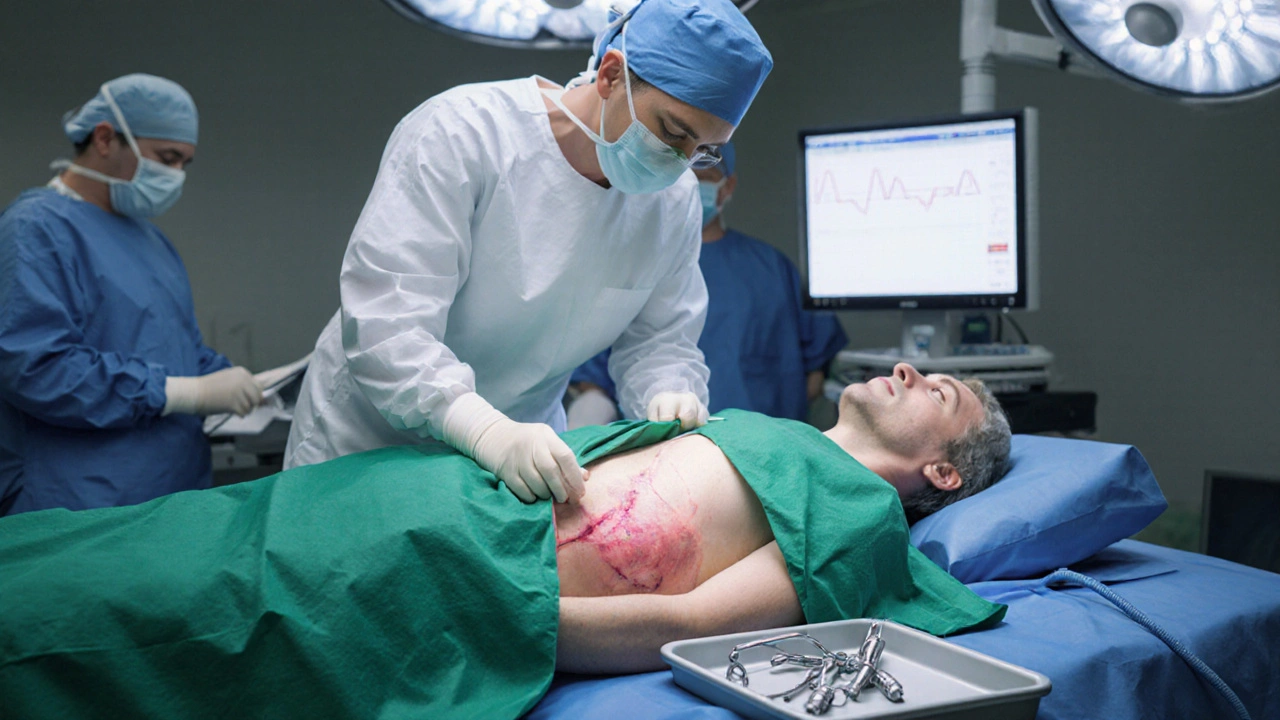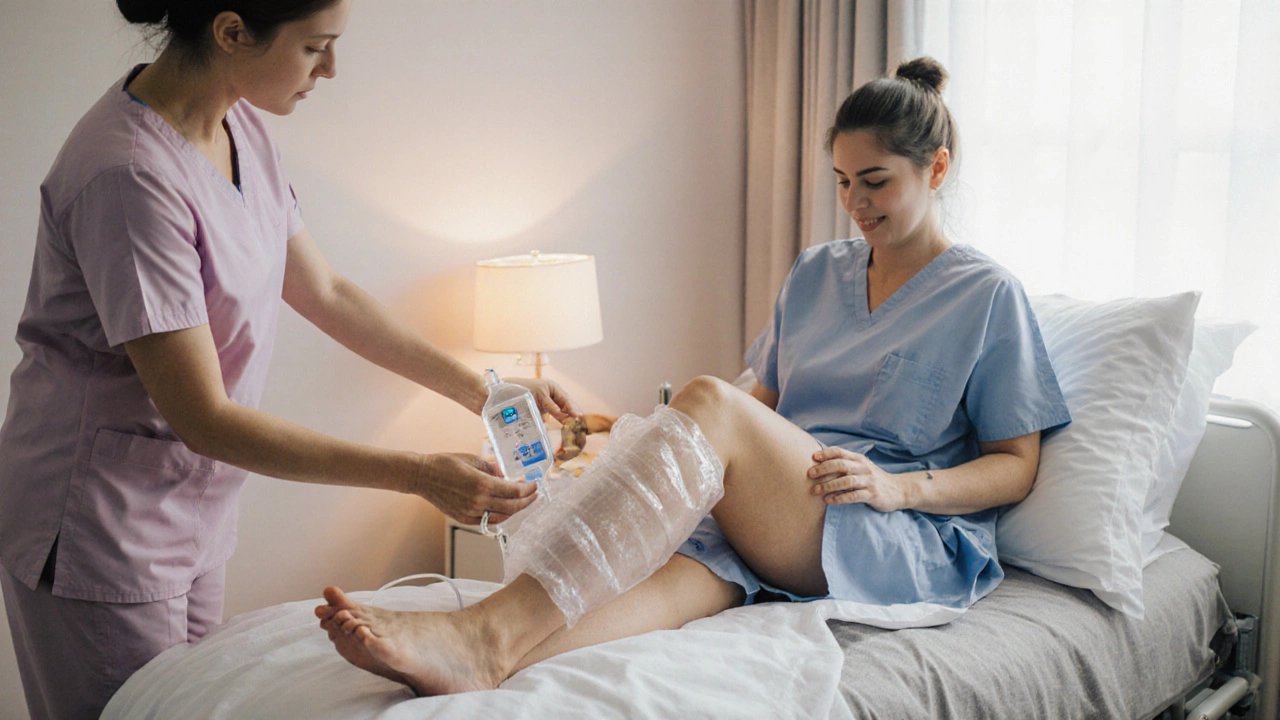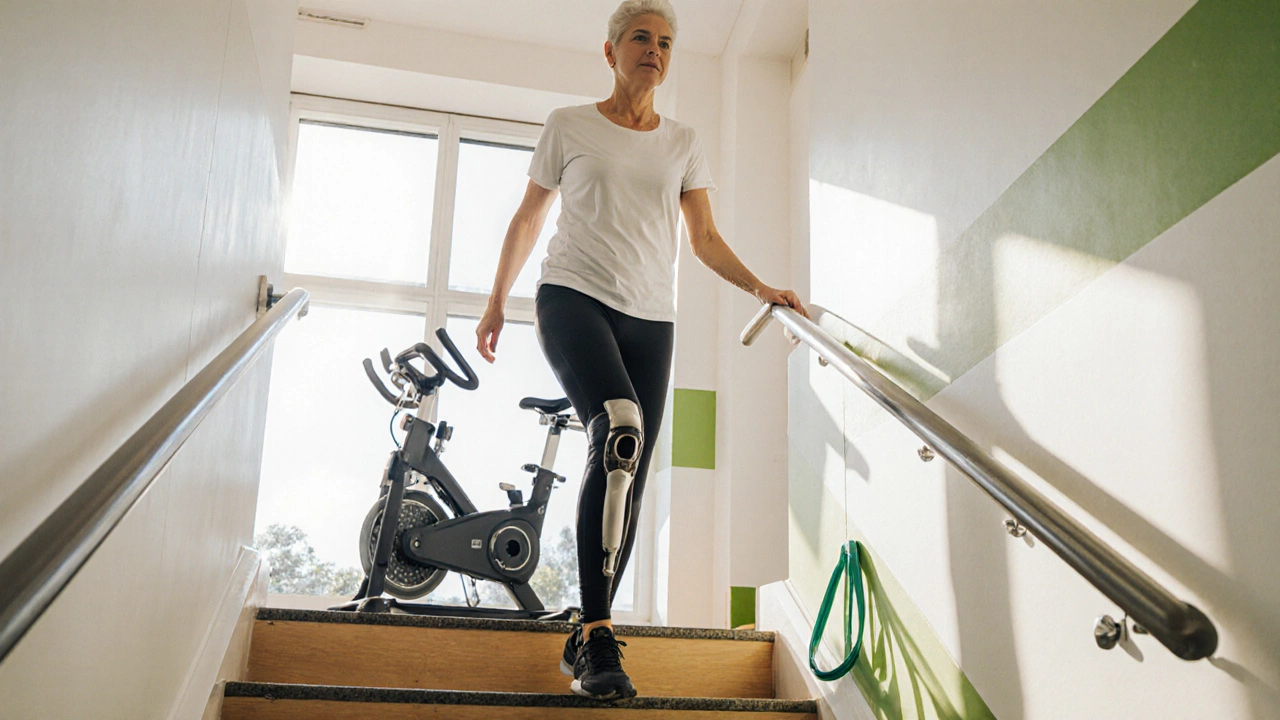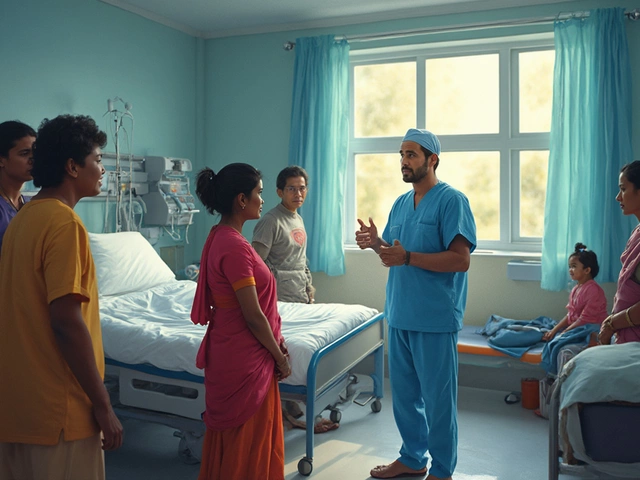
Total Knee Replacement Pain Estimator
About This Tool
This interactive tool estimates typical pain levels after total knee replacement surgery based on time since surgery and treatment approaches. Pain is measured using the Visual Analog Scale (VAS) from 0 (no pain) to 10 (worst pain).
Estimated Pain Level
Enter your parameters and click "Estimate Pain Level"
Important Note
This is a general estimation based on clinical data. Individual experiences may vary. Always consult with your healthcare provider for personalized advice.
Key Takeaways
- During surgery you won’t feel anything thanks to regional or general anaesthesia.
- Most patients report moderate pain for the first 48‑72hours, then it drops sharply.
- Effective pain control combines nerve blocks, oral analgesics and early movement.
- By week 4‑6 the majority of patients are back to low‑impact activities with minimal discomfort.
- Following rehab guidelines and using ice, elevation and proper medication can cut recovery time.
Total knee replacement is a surgical procedure that replaces the worn surfaces of the knee joint with a prosthetic implant is often recommended when osteoarthritis degenerative joint disease that erodes cartilage causes unrelenting pain. If you’re wondering how painful the whole process is, let’s break it down step by step - from the operating theatre to the first jog down the street.
What the Surgery Involves
The operation starts with an incision about 5‑8cm long over the front of the knee joint the hinge where the femur meets the tibia. The surgeon removes damaged cartilage and bone, then fits the prosthetic knee metal and plastic components that mimic natural motion. Modern implants are designed to last 15‑20years and allow a full range of movement.
Pain During the Procedure
Most patients are either under general anaesthesia a drug‑induced unconscious state that blocks all pain signals or a regional nerve block a targeted injection that numbs the nerves supplying the knee. With either technique you won’t feel the cutting, drilling or implant placement. The only sensation you might notice is a brief pressure or movement as the surgeon manipulates the leg, but it never registers as pain.

First 48 Hours: Immediate Post‑Op Pain
Once the anaesthesia wears off, the knee will feel sore, swollen and stiff. On a scale of 0‑10 (the Visual Analogue Scale, VAS), most people report scores between 5 and 6 in the first day. This is why hospitals give a combination of a nerve block catheter continuous infusion of local anaesthetic and oral analgesics pain‑relieving medicines such as NSAIDs, acetaminophen and, if needed, low‑dose opioids. Ice packs, leg elevation and gentle passive movement, guided by a physiotherapist, also keep the swelling down.
Week 1‑2: Managing Pain at Home
By the time you’re discharged (usually after 1‑2days), the VAS score often drops to 3‑4. Pain is still present, especially when you stand or walk, but it’s manageable with a scheduled regimen:
- Take a non‑steroidal anti‑inflammatory drug (e.g., ibuprofen 400mg) every 6hours with food.
- Use acetaminophen 1g every 8hours as a backup.
- Reserve a shortcourse of stronger painkillers (e.g., oxycodone) for breakthrough pain, not as a regular habit.
- Apply ice for 20minutes, 3‑4 times a day, and keep the leg raised above heart level.
- Start gentle physiotherapy guided exercises that improve range of motion and strengthen muscles as instructed by your surgeon.
Weeks 3‑6: Rehab and Pain Decrease
During the third to sixth week, most patients report a VAS score of 1‑2 - essentially a mild ache that eases with activity. You’ll be walking unaided, climbing stairs, and may even start low‑impact activities like stationary cycling. If you still feel sharp pain, it could signal inflammation or an infection, and you should contact your orthopaedic team right away.

Comparing Pain with Other Joint Surgeries
| Procedure | Typical VAS (Day 1) | Typical VAS (Week 2) | Hospital stay |
|---|---|---|---|
| Total knee replacement | 5‑6 | 3‑4 | 1‑2 days |
| Total hip replacement | 4‑5 | 2‑3 | 2‑3 days |
| Arthroscopic knee surgery | 2‑3 | 1‑2 | Same day |
As the table shows, a total knee replacement sits in the middle of the pain spectrum - more uncomfortable than a tiny arthroscopy but comparable to a hip replacement. The key is that the pain drops faster once you start the rehab protocol.
Tips to Minimize Discomfort
- Pre‑hab: Strengthen the quadriceps and hamstrings a few weeks before surgery; stronger muscles cushion the joint and reduce post‑op pain.
- Ask your surgeon about a peri‑operative nerve block; studies show it can cut opioid use by up to 40%.
- Stay hydrated and avoid constipation - both can amplify perceived pain.
- Follow the icing schedule religiously; cold therapy cuts swelling by 30‑40%.
- Commit to the physiotherapy plan; early motion prevents stiffness, which is a major source of lingering ache.
In short, total knee replacement pain is manageable. With modern anaesthesia, a solid pain‑control regimen, and diligent rehab, most patients move from moderate soreness to a comfortable, functional knee within six weeks.
Frequently Asked Questions
Will I feel any pain during the actual surgery?
No. You will be under either general anaesthesia or a regional nerve block, both of which block pain completely. You may feel pressure or hear sounds, but not pain.
How long does the worst pain usually last?
The most intense pain is typically within the first 48‑72hours. After that, pain scores drop sharply and become manageable with oral medication.
Do I need to stay in the hospital for several days?
Most UK hospitals discharge patients after 1‑2days, provided pain is under control and you can get out of bed safely.
Can I avoid opioids completely?
Many patients manage well with a nerve block, NSAIDs and acetaminophen. Opioids are reserved for breakthrough pain and are usually stopped within a week.
When can I return to normal activities?
Light activities like walking and climbing stairs are usually safe after 2‑3weeks. High‑impact sports may need to wait 4‑6months and should be cleared by your surgeon.





Rohan Talvani
I am a manufacturing expert with over 15 years of experience in streamlining production processes and enhancing operational efficiency. My work often takes me into the technical nitty-gritty of production, but I have a keen interest in writing about medicine in India—an intersection of tradition and modern practices that captivates me. I strive to incorporate innovative approaches in everything I do, whether in my professional role or as an author. My passion for writing about health topics stems from a strong belief in knowledge sharing and its potential to bring about positive changes.
view all postsWrite a comment